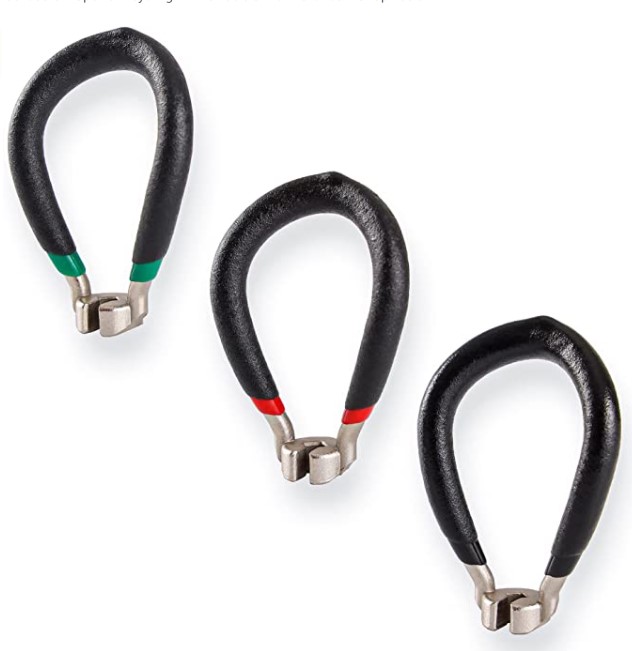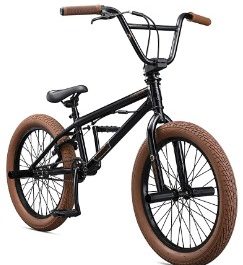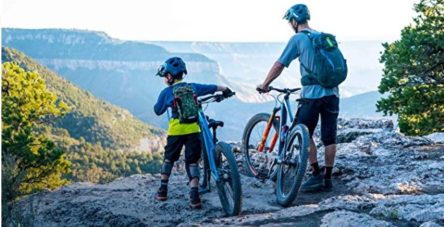No one in their right mind would ride a bike without brakes. I mean, how would they stop? Right? Wrong! Take a look at BMX bikes, and you probably won’t see a brake on sight. So, you might wonder, do BMX bikes have brakes?
Generally, the standard BMX bike comes with rear brakes. On the other hand, some models have both rear and front brakes, while others only have front brakes. Others still, especially freestyle BMX bikes, come with no brakes.
BMX bikes do indeed have brakes. However, personal preferences, the current BMX culture, and legal requirements determine whether a bike will have brakes or not. Read along as we delve deeper into aspects of all these issues and more.
Do BMX Bikes Have Brakes? – The Explanation
As a rider, one needs the assurance that comes with knowing that one can stop the bike gradually or quickly, especially during an emergency.
Bicycle manufacturers are obligated to offer mechanisms to bring the bike to a stop safely. That’s why bikes come with front and rear brakes.
However, some BMX bikes have only one brake – either the front or rear brakes. Other BMX riders decide entirely to do away with the brakes due to the type of stunts they perform.
But still, some manufacturers sell brakeless BMX bikes, which are primarily for performing stunts.
Now that you know that BMX bikes have brakes, are the brakes necessary? Let’s answer that next.

Are Brakes Necessary On a BMX?
The new fad in BMXing is riding without brakes. Hence, riders with brakes lose their “street cred points” and are usually the butt of mean jokes.
Here are two reasons why brakes are necessary.
- Brakes help you control when to stop – This is especially important when there’s an obstacle before you or you’re on a descent.
- Riders can perform and hold certain tricks longer when their bikes have brakes.
But if you’re still not convinced to leave your brakes on, you should remember that riding a bike without brakes can be illegal. Of course, that’s dependent on where you live.
However, most states require that bikes should have brakes. In Europe, for example, Article 44 of The Vienna Convention on Road Traffic indicates that all cycles must have good brakes.
So if you intend to ride your bike in such places, you will need to have brakes on your bike.
The exception to the brakes rule might apply to experienced Freestyle bike riders dedicated to riding parks or street. Having no brakes allows such riders to perform complicated stunts without hindrance from brake cables.
No matter your experience level, it’s still advisable to run your brakes. You can include Gyro cables or Detanglers (Check on Amazon) to help you pull off those 360-degree spins without worrying about brake cable hindrance.
Having known that brakes are important, how many types are there for you to choose? Let’s go through the options next!
Types of BMX Brakes
There are three types of BMX bike brakes.
1. Rim Brakes
Rim brakes are the most common brakes, and they work by friction between the wheel rim and the brake pads. There are different sub-types of rim brakes, the most common being V-Brakes and U-brakes.
V-brakes such as Promax (Check on Amazon) are easy to replace and maintain, making them standard on most BMX bikes. They also offer improved braking capabilities over U-brakes, especially in emergencies.

2. Disc Brakes
Disc brakes offer a more consistent braking experience and have superior braking powers, especially in wet conditions. They work by squeezing a brake pad against a rotor mounted around the hub.
Disc brakes are either mechanical or hydraulic.
Some 26-inch and 29-inch BMX bikes come with disc brakes. If your bike does not have disc brakes, you should note that the cost of upgrading to one is relatively high.
3. Drum Brakes
The hubs in bikes with drum brakes have a shell with brake shoes that push outward onto the shell. When the brake shoe gets in contact with the shell, it generates friction, and the wheel comes to a stop.
Coaster brakes are the most common type of drum brakes in BMX bikes. These brakes are standard in children’s bikes and engaged when the rider backpedals. However, a few adult-size bikes still have coaster brakes.
Effective BMX Braking Techniques
We found an interesting quote online: Efficiency is doing things right; effectiveness is doing the right things. So, put the following items into effect for your brakes to serve you efficiently.
For a new rider, while walking with your bike, start by pumping the front brake followed by the rear brakes. You can then press them together to get a feel of your brakes.
For gradual slowing down, use the rear brakes. For emergency braking, start with the front brakes, taking care to shift your body weight behind so that you don’t fly over the handlebars.
How to Maintain Your BMX Bike Brakes?
Your safety while riding is essential. The brakes are a vital part of enhancing your safety by bringing you to a stop generally and in the case of an emergency.
So, here are a few tips to help you maintain your brakes in top condition:
· Lube your brake cables
Brake cables, also known as Bowden cables, are made from twisted steel cables housed within a plastic sheath.
Unfortunately, dirt and gunk do get into the brake housing. Also, there is friction between the cable and the plastic housing, which could eat away the cable.
For that reason, it’s important to lube your brake cables to eliminate gunk and reduce friction. You can use bicycle lubricants such as the Park Tool HPG-1 (Check on Amazon).
It lubes your cables longer and increases water repulsion capabilities to ensure your cables don’t rust and snap. The pull of your brakes will also improve, making them feel better.

· Check your barrel adjuster
Make sure your barrel adjusters are fit tight in place. Barrel adjusters help in fine-tuning the brakes without tools.
To find the barrel adjusters along the cable, check where the cord exits from a brake lever or where the cable enters the brake mechanism.
While some riders prefer removing them, one should retain them.
· Brake pad position adjustments
Check the alignment of the brake pad on the brake arm – whether they’re off or angled in any way. Adjust accordingly.
· “True” your back wheel
Bicycle wheels depend on tension on the spokes to suspend the wheel onto the hub. “Truing” means to adjust the wheel back into alignment to help it spin straight.
Sadly, a wobbly wheel will make the brakes not function correctly. So, get yourself a spoke wrench such as the Bikehand Spoke Wrench (Check on Amazon) and use it to “true” your back wheel.

· Adjust your brake spring tension
The correct brake spring tension is subjective. It depends on you and the type of brake set up you run.
Generally, though, a tight brake spring calls for a harder brake pull, while a loose brake spring calls for an easy brake pull. Both of these extremes will affect your brakes’ correct feel and functioning.
How would you stop if you find yourself on a bike with the brakes gone? Read along as we turn to look at how to stop a bike without brakes.
How to Stop a BMX Bike Without Brakes?
Brakeless riding is highly discouraged. It is dangerous! However, you probably want to learn how to bring your bike to a stop without brakes.
Most of the methods needed to stop a bike without brakes involve the foot. Below are a few tips:
- Skateboard technique – You can bring your bike to a stop using the skateboard technique. You simply drag your heel on the ground, and you’ll come to a halt. However, it’s not recommended for high speeds.
- Foot on the rear wheel – The next option involves gently placing your foot on the rear wheel to halt you. You should practice this type of braking while you still have brakes.
- Foot Jam – A foot jam involves placing your foot on the front wheel. Your foot will jam with the tire and the fork, bringing you to a stop. However, you risk being thrown forward with such a stop.
If all these tips fail, just bail out and let the bike ghost ride.
People Also Ask
Do BMX Bikes Need Brakes?
BMX bikes need brakes because the safest way to bring a bike to a stop is to apply brakes. Another reason why BMX bikes need brakes is that riding a bike with brakes gives you the confidence that you can bail out on a trick that doesn’t work.
Also, riders cannot execute specific tricks such as bar spins without brakes. Therefore, your bag of tricks automatically expands when you run brakes.
Do BMX Bikes Have Hand Brakes?
The brakes on BMX bikes operate using hand-levers mounted on the handlebars. The exception to hand brakes are entry-level and children’s bikes. Such bikes come with foot brakes that engage when a rider backpedals.
Do BMX Bikes Have Pedal Brakes?
Some BMX bikes come with pedal brakes – also referred to as coaster brakes. The brakes are engaged when the rider backpedals. Coaster brakes are the standard in children’s bikes and entry-level bikes.
Coaster brakes are preferred because pulling lever brakes might be difficult for kids who are not yet strong enough.
Why Do BMX Bikes Only Have One Brake?
Most BMX bikes have only one brake, usually the rear brake. This is because running only one brake reduces the weight on a bicycle. Even a minimal weight reduction matters a lot for a sport that involves nimble and gravity-defying stunts.
Besides, cyclists who ride brakeless claim that it heightens their awareness
Why Don’t BMX Bikes Have Front Brakes?
BMX bikes do not have front brakes to enable more clearance for movement at the front. That’s more important when performing stunts on the streets.
In Conclusion – Do BMX Bikes Have Brakes?
Brakes are essential to bringing a bicycle to a safe stop. A rider will also perform tricks safely with fitted brakes. But safety and performance issues aside, the law in most states requires that all bikes – BMX bikes included – should have brakes.
Relevant Post:


